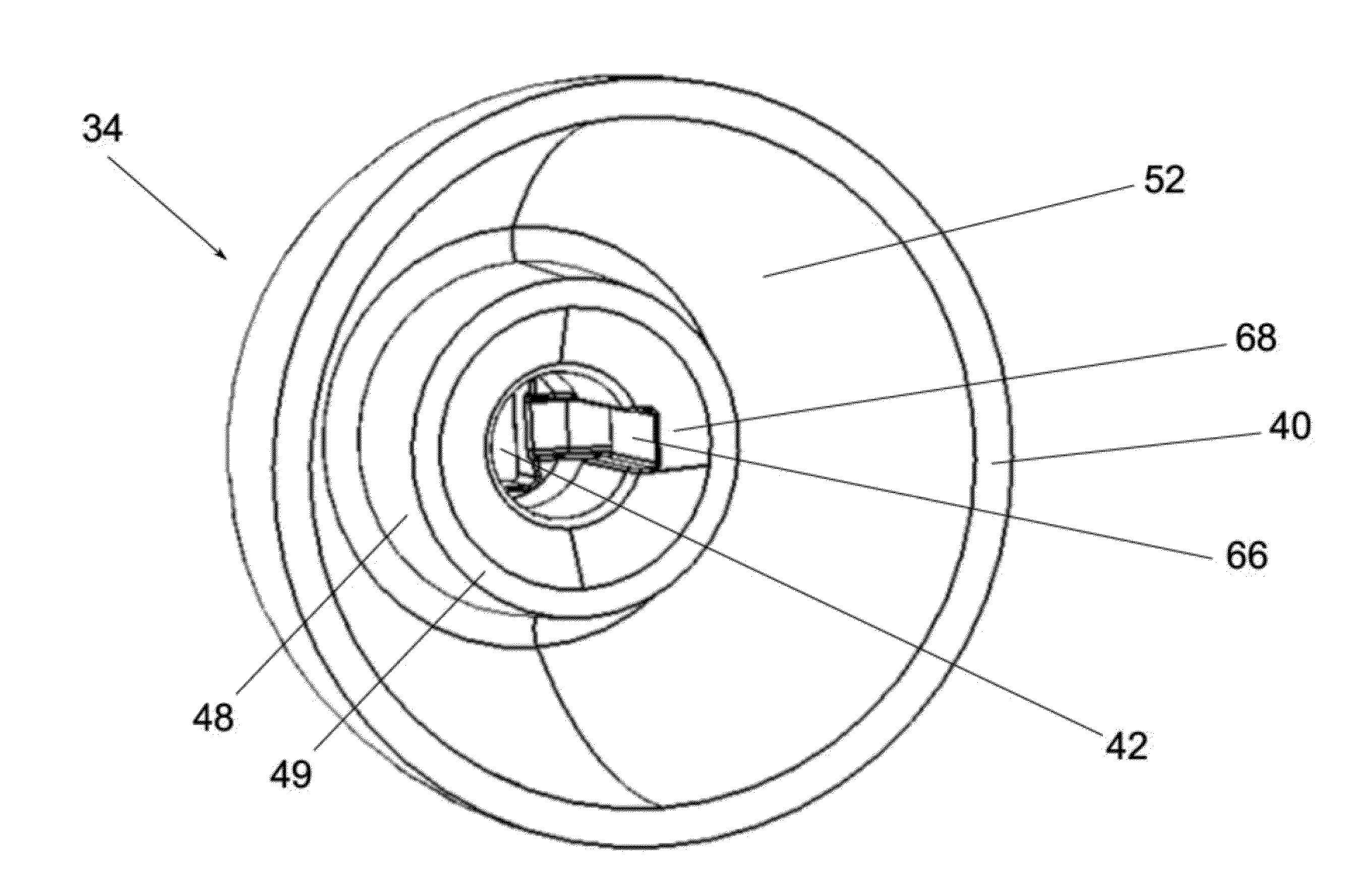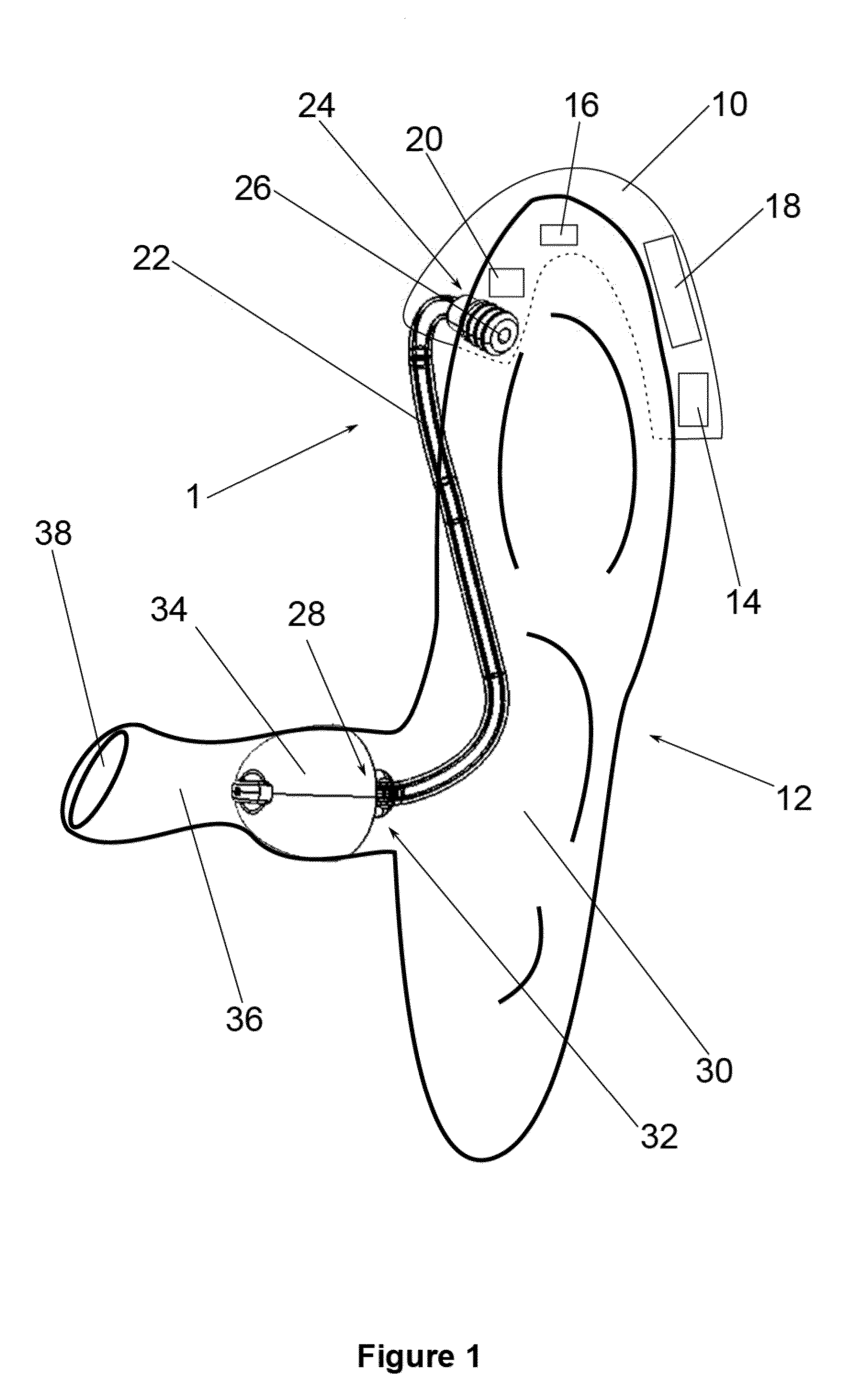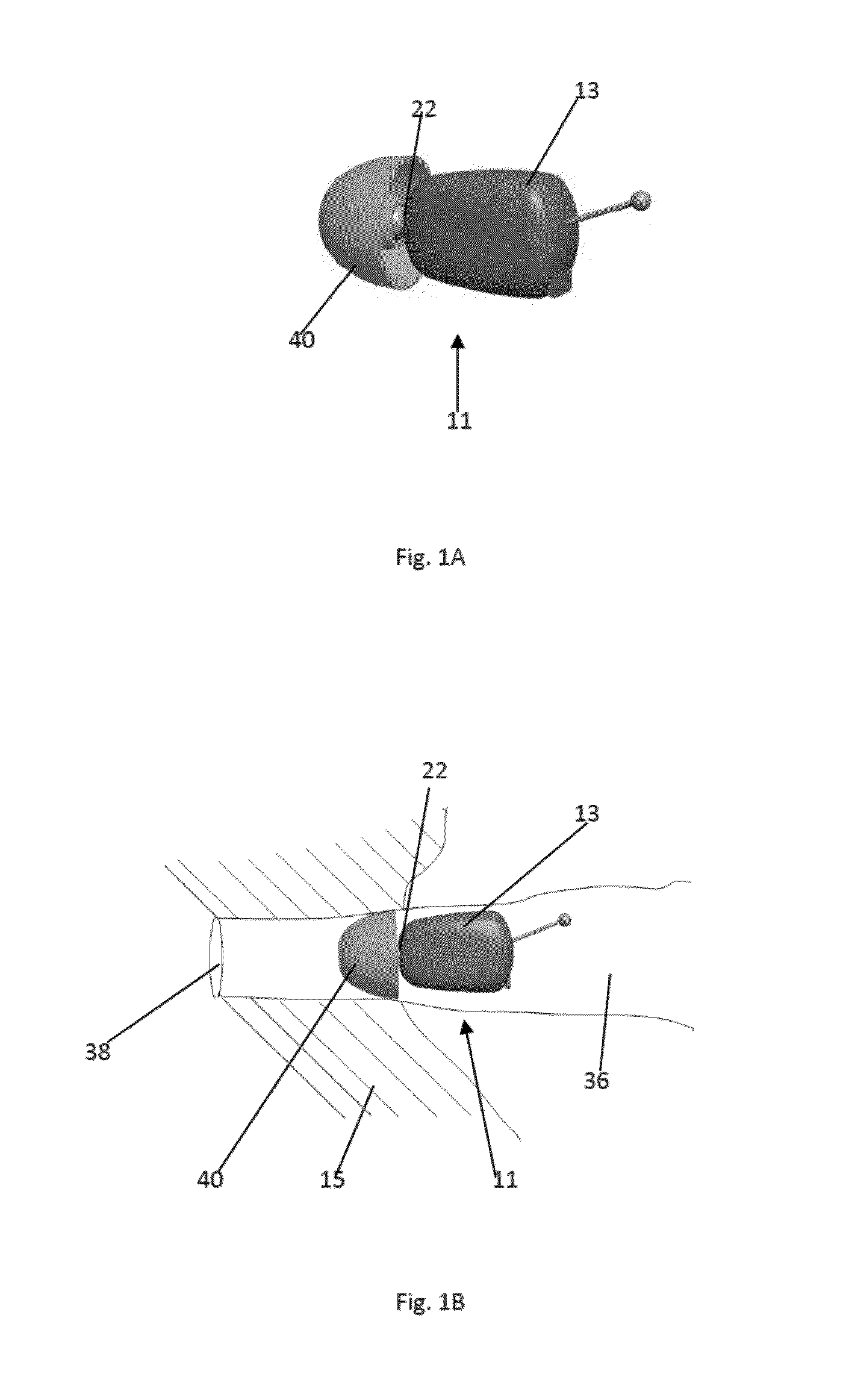Vented dome
a venting dome and dome technology, applied in the field of hearing devices, can solve the problems of fess likely blockage of the vent pathway, and achieve the effects of reducing the size of the venting pathway, reducing the sound transmission, and reducing the venting
- Summary
- Abstract
- Description
- Claims
- Application Information
AI Technical Summary
Benefits of technology
Problems solved by technology
Method used
Image
Examples
first embodiment
[0048]FIG. 3 presents a flexible mounting insert 34 with a filter bridge 54 in front of the core hole 42 intended as a wax filter. The filter bridge 54 of this embodiment contains a small filter bridge hole 56 and is affixed to the dome shaped part 40 of the flexible mounting insert 34 with a filter bridge affixture 58. Sound can pass either through the filter bridge hole 56 or through an indirect pathway along the sides of the filter bridge 54 into the core hole 42. Ear wax is stopped by the filter bridge 54, as the ear wax is too large to pass neither the filter bridge hole 56 nor the indirect pathway along the sides of the filter bridge 54 into the core hole 42.
[0049]FIG. 4 is a longitudinal cut through the first embodiment of the flexible mounting insert 34, Behind the filter bridge 54 is an entrance area 60 of the core hole 42 which is enclosed and formed by the dome shaped part 40 of the mounting insert 34. The entrance area 60 may contain additional filter elements (not shown...
second embodiment
[0050]FIG. 5 shows the flexible mounting insert 34 which contains only one vent groove 66 in a box-like form along the circumference of the core hole 42 extending to the outlet 68 which ends with the proximal end 49 of the core pathway projection.
[0051]FIG. 6 presents a third embodiment of the flexible mounting insert 34 which is almost identical to the second embodiment, but contains four smaller sized box-like vent grooves 66 which are arranged symmetrically around the core hole 42. The vent grooves 66 extend to the outlet 68, which ends at the proximal end 49 of the core pathway projection 48.
[0052]In FIG. 7 an acoustic tube 22 with a distal end 28 with a ball joint 70 having a spherical shape is connected to the mounting insert 34. The mounting insert 34 is comprised of two parts, an inner core part 72 which is of a hard material and an outer part 74 which is of a softer and flexible material. The inner core part 72 adjoins to the ball joint 70 which encloses the core pathway 46...
fourth embodiment
[0054]FIG. 8 presents the flexible mounting insert 34 which contains a removable wax filter element 76. The wax filter element 76 is located behind the core hole 42 in the core pathway 46 and enclosed by the core pathway projection 48. A wax filter grating 82 has holes 84 that allow passage of sound, while the grating 82 prevents ear wax to enter the core pathway 46 of the mounting insert 34. The wax niter element 76 contains a vent groove 66, which is intended for venting. The vent groove 66 is therefore located behind the wax filter grating 82, which means that the wax filter element 76 protects the core pathway 46 for sound transmission and the vent pathway of the vent groove 66 from becoming blocked by ear wax. Preferably the wax filter grating 82 contains a coating on its distal side oriented into the ear canal, which dampens sound. Also a coating which interacts with ear wax to liquefy the ear wax can be applied on the wax filter element 76.
[0055]FIG. 9 shows a fifth embodimen...
PUM
 Login to View More
Login to View More Abstract
Description
Claims
Application Information
 Login to View More
Login to View More - R&D
- Intellectual Property
- Life Sciences
- Materials
- Tech Scout
- Unparalleled Data Quality
- Higher Quality Content
- 60% Fewer Hallucinations
Browse by: Latest US Patents, China's latest patents, Technical Efficacy Thesaurus, Application Domain, Technology Topic, Popular Technical Reports.
© 2025 PatSnap. All rights reserved.Legal|Privacy policy|Modern Slavery Act Transparency Statement|Sitemap|About US| Contact US: help@patsnap.com



